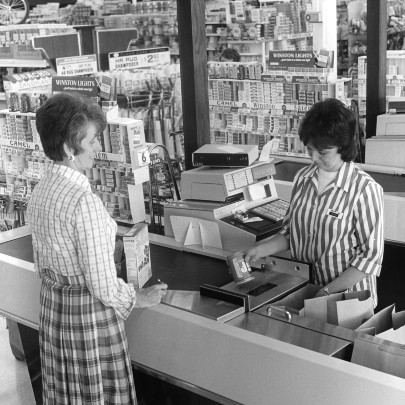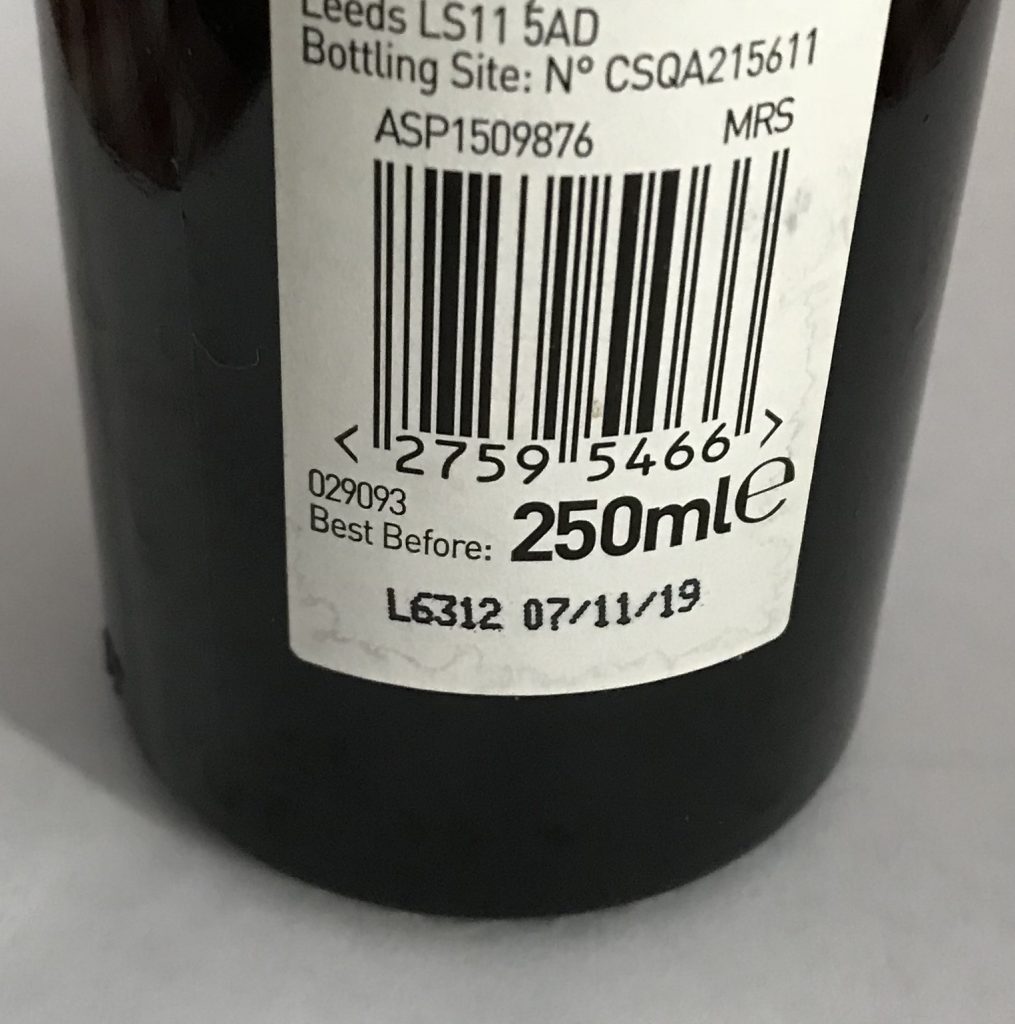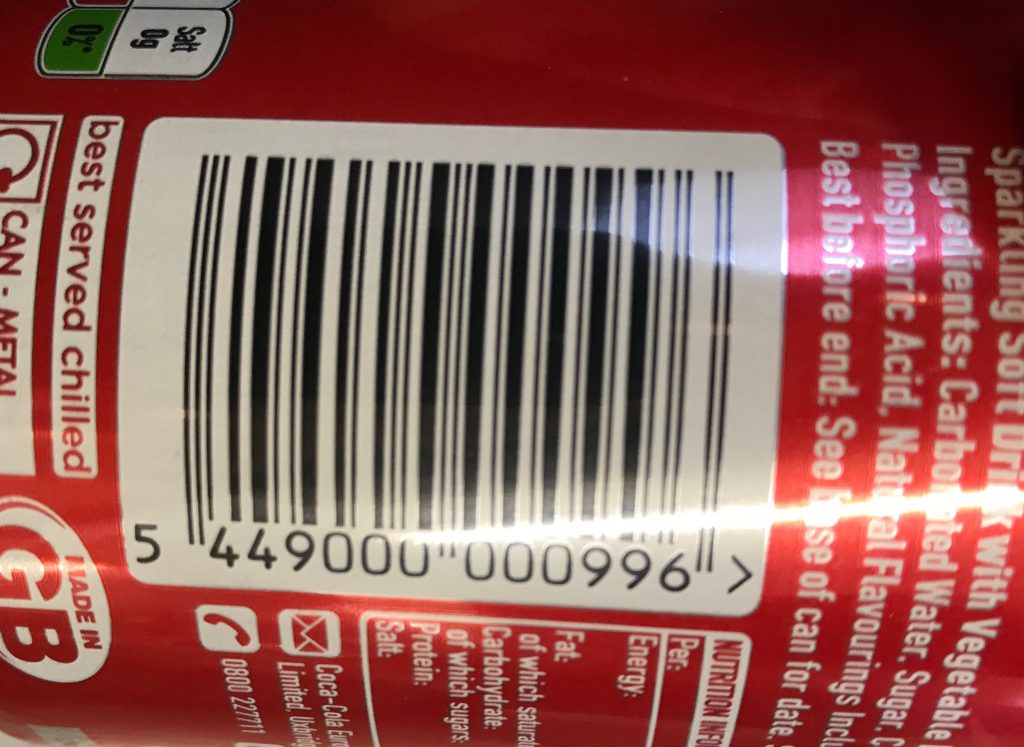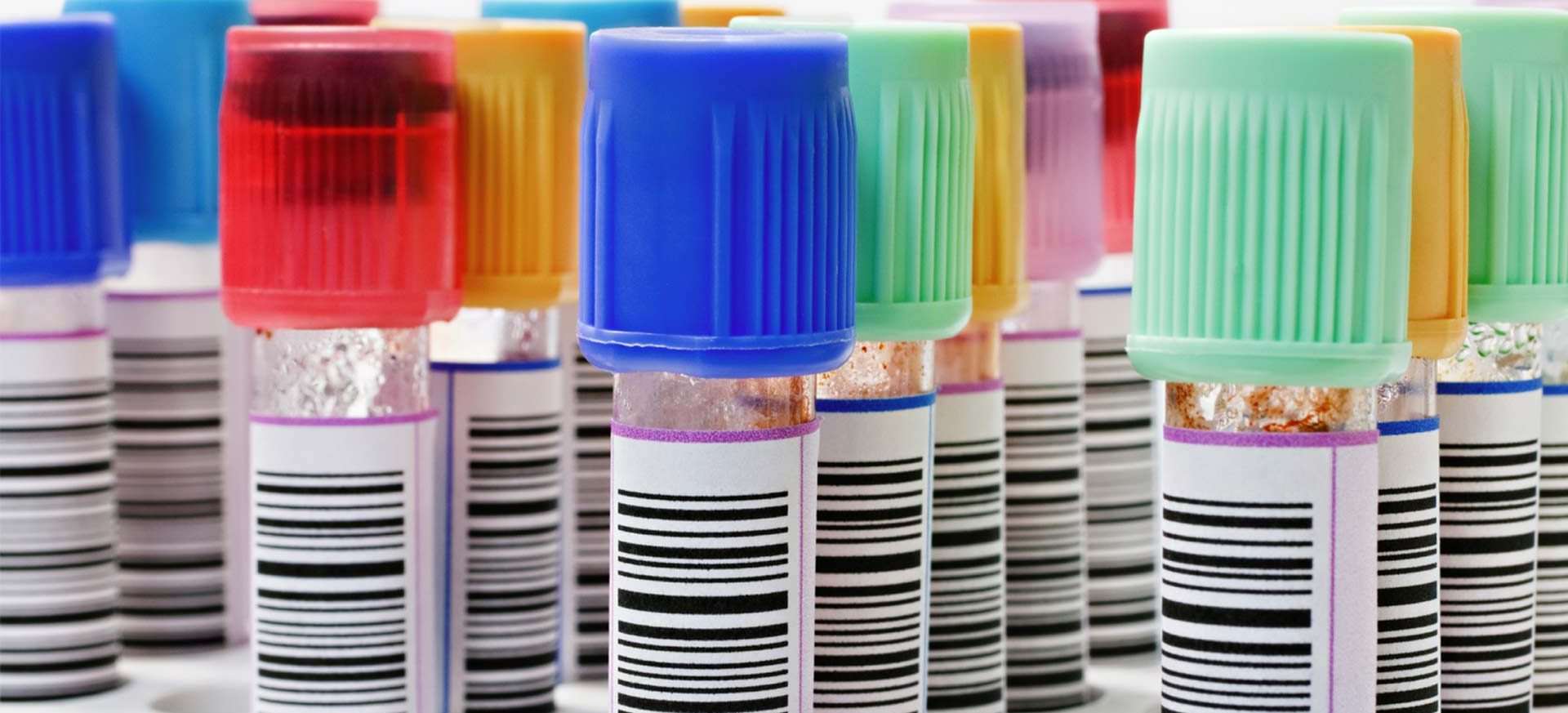What Retail Suppliers Need to Know About Barcodes
You’ve been told you need to put barcodes on your products and you’re probably feeling overwhelmed by all these barcode names and numbers.
UPC, EAN, GS1, GTIN12, GTIN13, GTIN8 – what do they all mean?
What do I need?
Let me explain all you need to know about barcodes for retail suppliers, but first let me explain how we got to where we are today.

In the beginning there was the Universal Product Code (UPC). In 1973 to be precise.
The UPC was a 12 digit number that got turned into a barcode.
The UPC was the outcome of a group of US retailers who had got together and decided upon a way of automatically identifying groceries.
A pack of Wriggley’s chewing gum was the first item scanned in a supermarket in Ohio – no doubt surrounded by a group of cheering barcode geeks (like myself).
US retailers formed a group to manage the issue of barcode numbers and called the group the Uniform Code Council.
In 1976, seeing the benefit of this new idea, the rest of the world got in on the act and formed EAN, the European Article Numbering Association. The Americans kindly allowed the use of the UPC code, but with an extra digit.
So now there was a 12 digit number for the US and a 13 digit number for the rest of the world.
In 1990 the two organisations formally agreed to work together and expanded their presence to 45 countries. In 2005 they started to use one name – GS1, Global Standards One.
Whilst the two organisations had merged, the situation on the ground wasn’t so tidy. There were UPC A, UPC E barcodes. There were EAN8’s and EAN13s, ITF14s and EAN 128s not to mention a range of 2D barcodes from GS1.
In a bid to streamline the barcode names GS1 launched Global Trade Item Number. The GTIN identifies products and brings together formerly separate registers – for books, music, magazines, Japanese items, international items and American items.
So now we have GTIN8, GTIN12, GTIN13 and GTIN14s. But what’s the difference?
GTIN-8

GTIN8s are used in retail (as opposed to in distribution) and are short 8 digit codes for use on small items, such as packs of chewing
gum or my personal favourite, chocolate bars. They used to be called EAN8s or UPCEs. 8 digit barcodes are in short supply so you would need to ask GS1 specially.
GTIN-12
GTIN-12s are used in retail. They used to be called UPC A barcodes and are the North American format of barcode. All barcode readers can read these codes and GTIN-12s can be used anywhere in the world. GS1 in the US still issue 12 digit codes.
GTIN-13
GTIN-13
GTIN13s are used in retail. They used to be called EAN13s or JAN13s and are the international barcode format. They are the barcodes you see on most products (except small ones). All barcode readers can read GTIN13s and they can be used anywhere in the world – including North America.

GTIN-14

GTIN-14s are used in the warehouse and distribution side of the supply chain. Retailers won’t be scanning these codes at the checkout. In fact, none of the items you take to the checkout will even have these codes on them. They used to be called ITF-14, EAN14 or Outer Case Code. If you are a manufacturer – do you need GTIN-14s and will you use them? The answer is yes. GTIN-14s are GTIN-13s with a zero at the beginning. How do you use GTIN-14s? You use them on outer cases. If you have a dozen retail items packed in a box then the label you attach to the outside of the box is a GTIN-14. If you would like help printing these codes contact us for help.
Updated: 13 Nov 2024
- Barcode Labels
- Biodegradable Labels
- Block Out Labels
- Booklet and Fold out Labels
- Cryogenic Labels
- Fan-Fold Labels
- High Temperature Heat-Proof Labels and Tags
- Label Design and Print Software
- Loop Lock Labels
- Peel and Reveal Labels
- PiggyBack Labels
- RFID and Security Labels
- Security Labels
- Sustainable Labels
Get a Free Sample Pack
-
Our Products -
More Products



